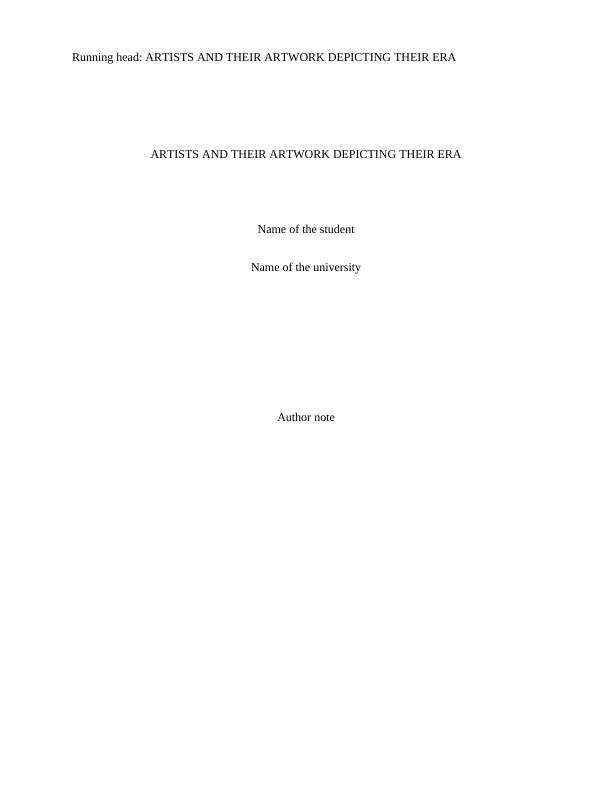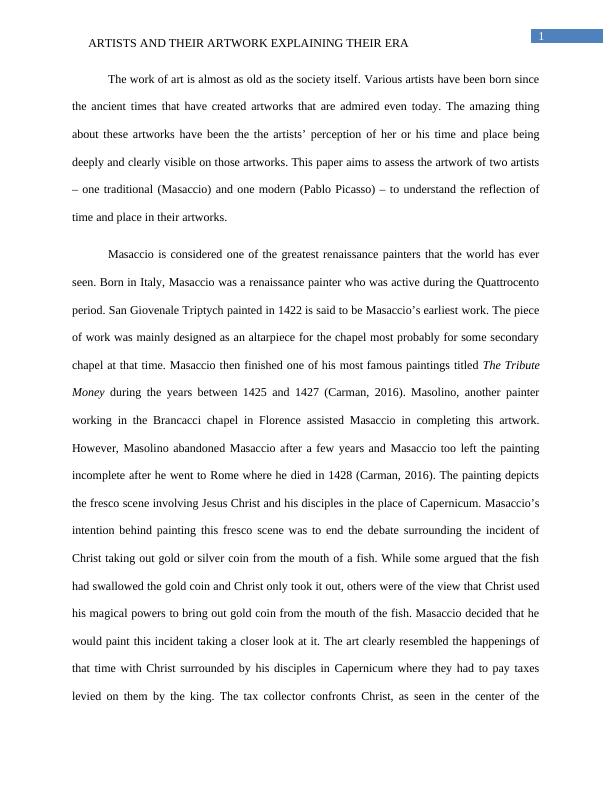Artists and Their Artwork Depicting Their Era
Explain how artists have created artworks which reflect the time and the place where they were created. In your response refer to at least two artworks, one by a traditional artist and one by a modern artist. Conclude with a critical evaluation of the achievements of each artist.
5 Pages1004 Words50 Views
Added on 2023-03-17
About This Document
This paper aims to assess the artwork of two artists - one traditional (Masaccio) and one modern (Pablo Picasso) - to understand the reflection of time and place in their artworks.
Artists and Their Artwork Depicting Their Era
Explain how artists have created artworks which reflect the time and the place where they were created. In your response refer to at least two artworks, one by a traditional artist and one by a modern artist. Conclude with a critical evaluation of the achievements of each artist.
Added on 2023-03-17
ShareRelated Documents
End of preview
Want to access all the pages? Upload your documents or become a member.
Giotto's Painting on The Lamentation: Exploring Historical Artwork
|5
|1464
|88


